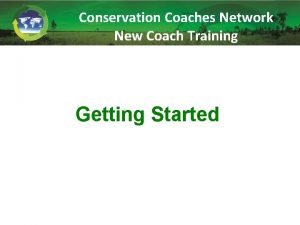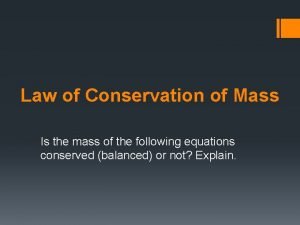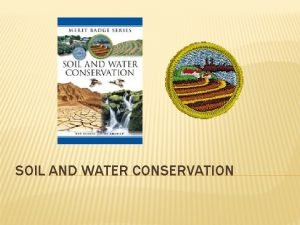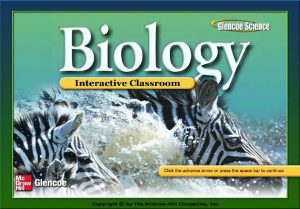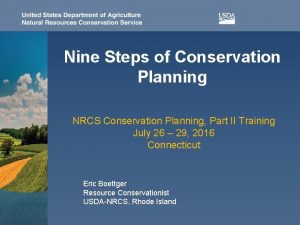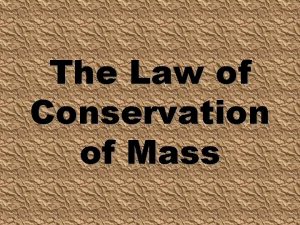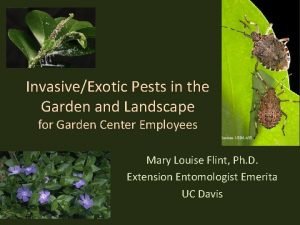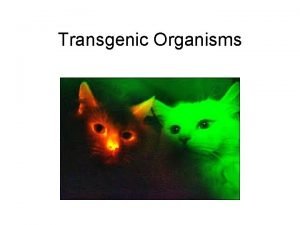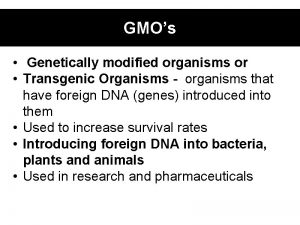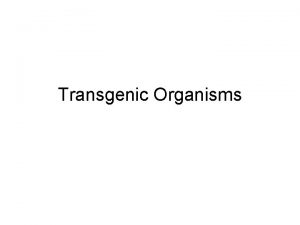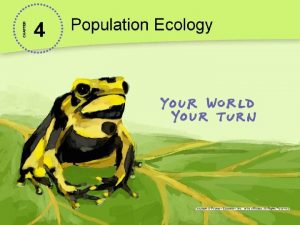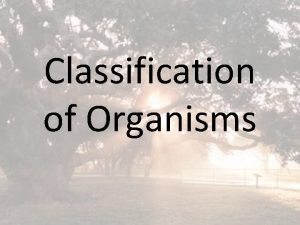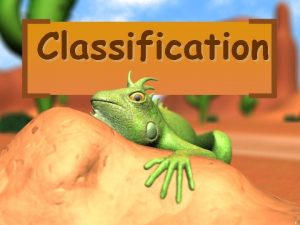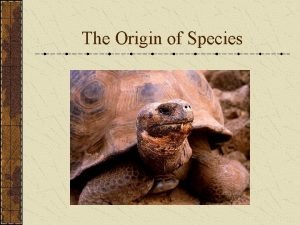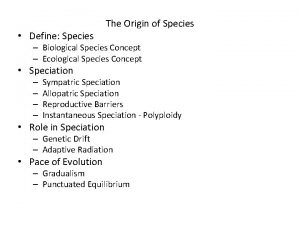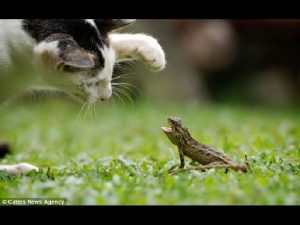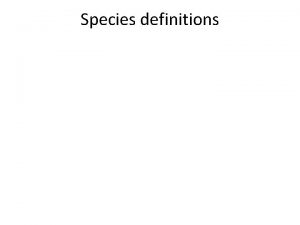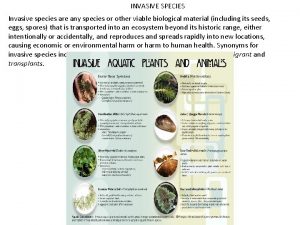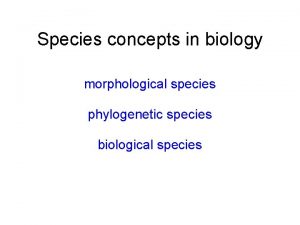Conservation InvasiveExotic Species These are organisms that are
























- Slides: 24

Conservation

Invasive/Exotic Species These are organisms that are not native to a region, but have found an niche there, which is very destructive to other species.

Zebra Mussels Originally from Eastern Europe, zebra mussels hitched a ride to the Great Lakes inside the balast tanks of ocean going freighters.

They can cover slow moving animals such as crayfish, clams or turtles…

…and can clog intake valves and stick to props of boats.

They do millions of dollars of damage each year to industry, tourism and boating around the Great Lakes. http: //www. nationalatlas. gov/dynam ic/an_zm. html

Sea Lamprey

The Sea Lamprey is an ocean dwelling parasite the adapted to fresh water and invaded the Great Lakes through the St. Lawrence Seaway.

They have severely damaged fish populations in the Great Lakes and inland lakes in Michigan and Canada.


Kudzu Vine was originally brought to the Southern United states to be used as ground cover. It soon grew out of control.

It covers trees and other vegitation and deprives them of sunlight.

Even small children…j/k.


The Emerald Ash Borer Beetle

The EABB relies on ash trees for survival.

They infest the tree under the bark where their larvae grow and eventually kill the tree.


Endangered Species • Endangered means the number of individuals of a species are near extinction and there continue to be threats to their survival. • Vulnerable – a lesser degree of endangered. • Threatened – an even lesser degree of endangered.


Captivity and Reintroduction Programs

In some cases, conservation workers gather remaining organisms and raise them in captivity.

They are later reintroduced into the wild with some success.

Human impact on our ecosystem Habitat destruction Extinction of species Water pollution Land pollution Climate change/global warming/greenhouse effect • Human health impacts • Over consumption and waste • • •
 Antigentest åre
Antigentest åre Competitive interaction
Competitive interaction Unicellular and multicellular.
Unicellular and multicellular. Tôn thất thuyết là ai
Tôn thất thuyết là ai Ngoại tâm thu thất chùm đôi
Ngoại tâm thu thất chùm đôi Walmart thất bại ở nhật
Walmart thất bại ở nhật Gây tê cơ vuông thắt lưng
Gây tê cơ vuông thắt lưng Block nhĩ thất cao độ
Block nhĩ thất cao độ Tìm độ lớn thật của tam giác abc
Tìm độ lớn thật của tam giác abc Sau thất bại ở hồ điển triệt
Sau thất bại ở hồ điển triệt Thể thơ truyền thống
Thể thơ truyền thống Hãy nói thật ít để làm được nhiều
Hãy nói thật ít để làm được nhiều Thơ thất ngôn tứ tuyệt đường luật
Thơ thất ngôn tứ tuyệt đường luật Species
Species The law of conservation of energy states that
The law of conservation of energy states that Strategic conservation planning
Strategic conservation planning Parity conservation
Parity conservation Conservation of mass in chemical reaction
Conservation of mass in chemical reaction Potential kinetic energy
Potential kinetic energy Explain water pollution
Explain water pollution Chapter 5 biodiversity and conservation test answer key
Chapter 5 biodiversity and conservation test answer key 9 steps of conservation planning
9 steps of conservation planning Maine department of agriculture conservation and forestry
Maine department of agriculture conservation and forestry Law of conservation of mass
Law of conservation of mass Law of energy conservation
Law of energy conservation















